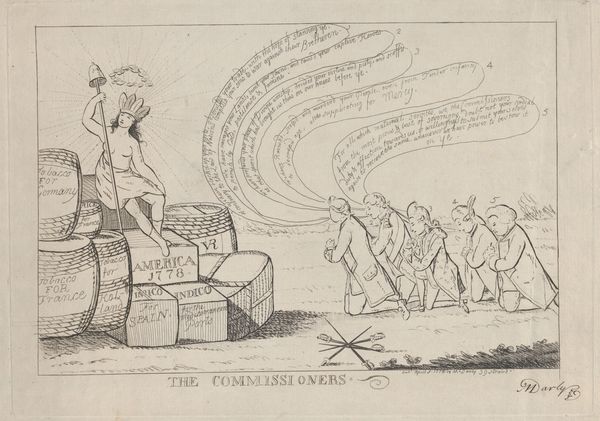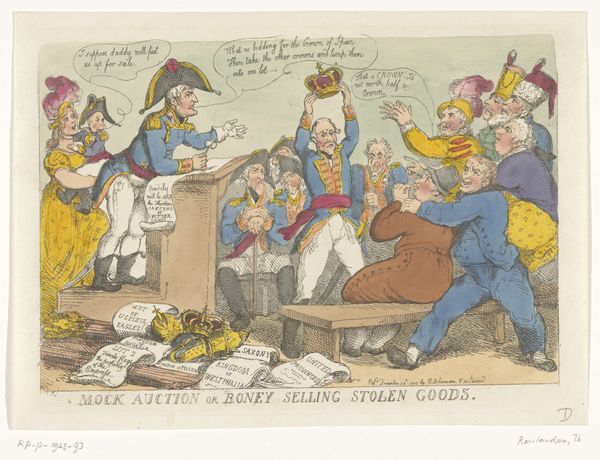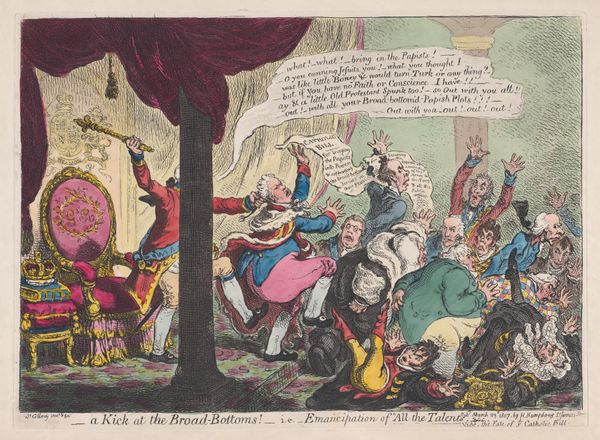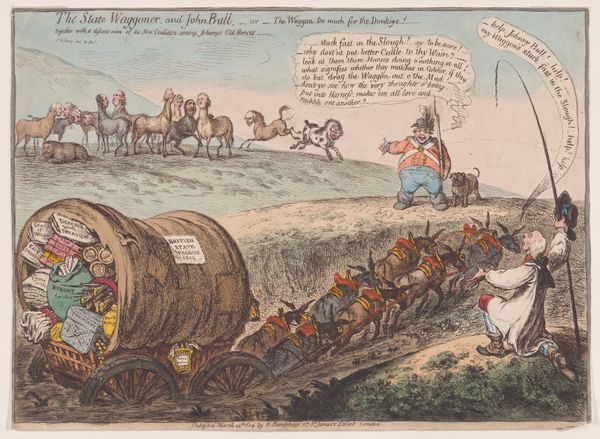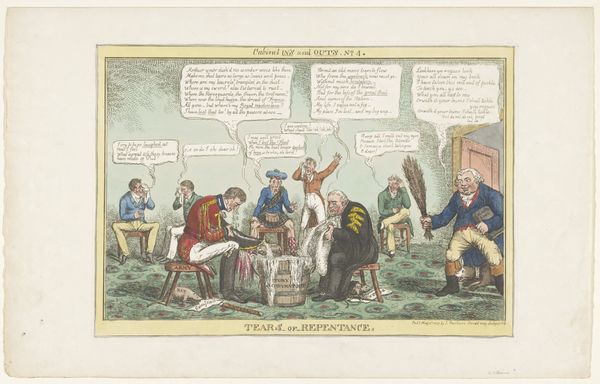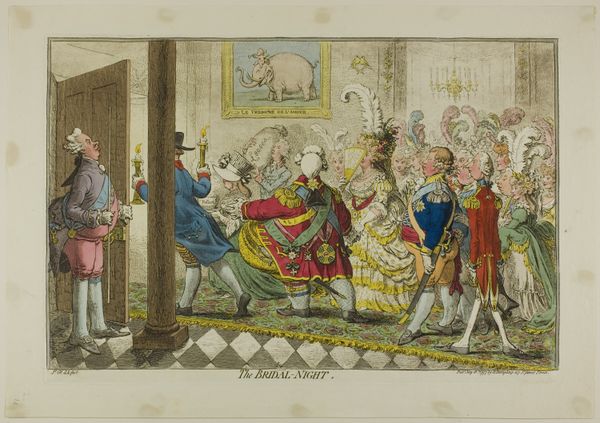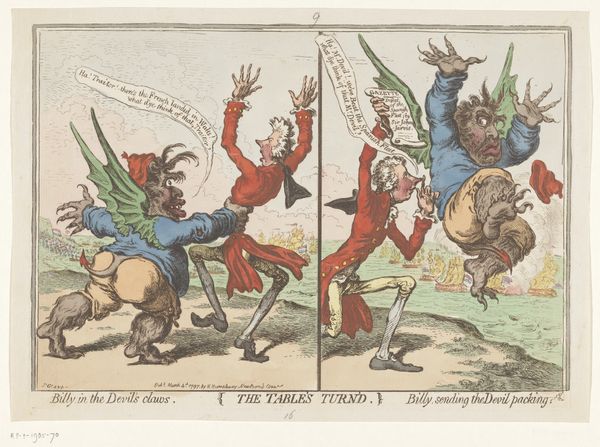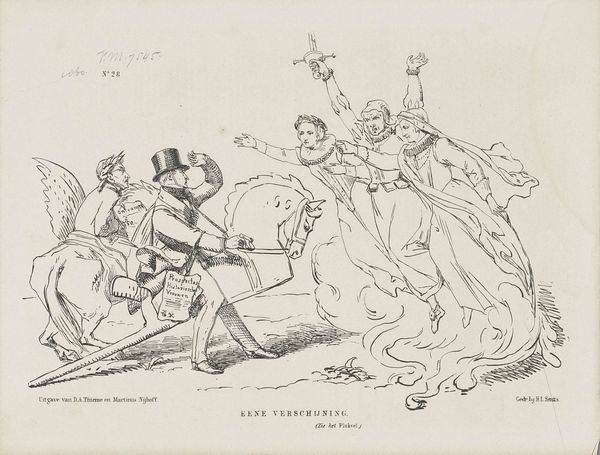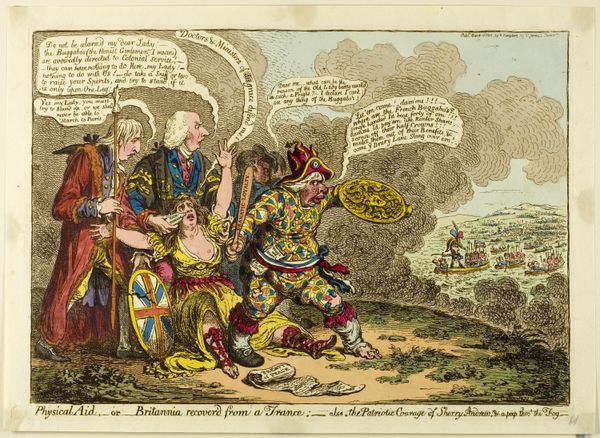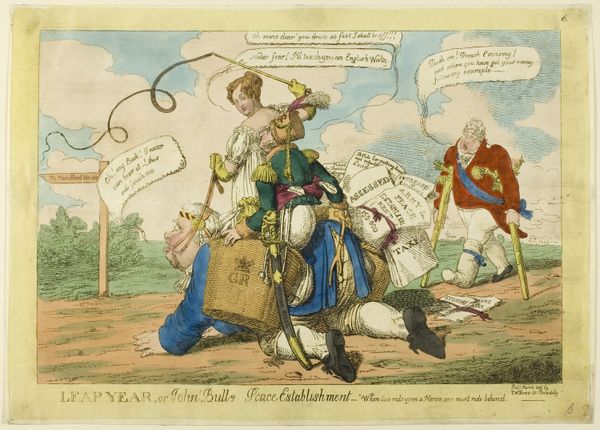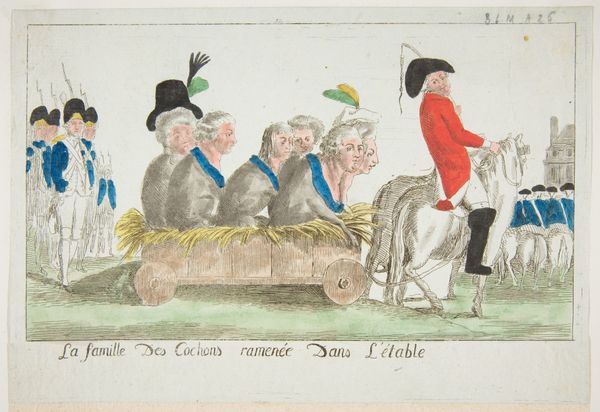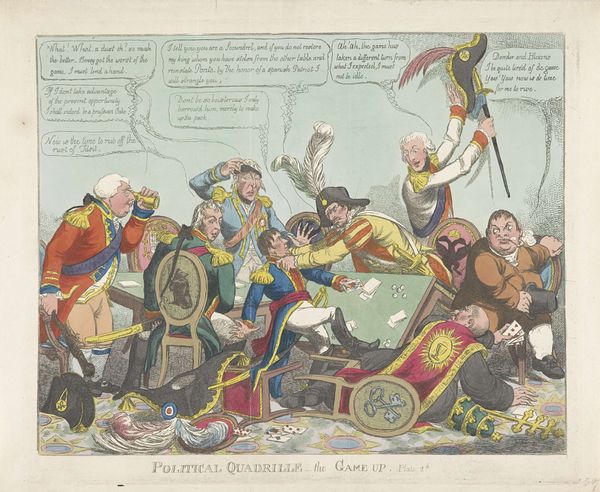
drawing, print
#
drawing
# print
#
caricature
#
history-painting
Dimensions: plate: 9 3/4 x 13 7/8 in. (24.7 x 35.3 cm) sheet: 11 7/16 x 17 5/8 in. (29.1 x 44.7 cm)
Copyright: Public Domain
Curator: Let’s explore this intriguing print, “The Commissioners,” crafted in 1778 by Matthew Darly. At first glance, what resonates with you? Editor: Well, there's a strong sense of imbalance. The Native American figure, perched atop these crates, is rendered with such strength, literally towering over these bowing supplicants, it makes them seem diminished and ineffectual, a reading underscored by their flowery words which sound more like placation than negotiation. Curator: Precisely. The artist, Darly, employs a potent visual vocabulary of caricature to comment on the British peace commissioners' attempts to reconcile with the American colonies. It's important to look at how the artist used the media of drawing and printmaking in relation to other caricatures and even history-paintings of the time. Editor: I find the choice of imagery incredibly telling. The barrels and boxes labeled with “Tobacco for Germany,” “America 1778,” “Spain,” and “Indigo,” – the resources of different colonies! Stacked as his throne… it's a powerful visual metaphor for the foundation upon which this figure—America— now sits. Note also that it is raised above the crossed arrows implying a broken treaty at the foreground, an evocative element, to say the least. Curator: And these men, kneeling and attempting to appease him… Darly uses their bodies, their clothing, to really emphasize the desperate position of the British, their elaborate attire, and posture communicating desperation. I'd wager that this image resonated with viewers due to the fact that it was so cheaply made: many people could obtain copies. Editor: I see the symbolic layers going beyond a simple political commentary. This Native American figure, presented in this commanding, almost god-like manner, also represents something primal. This could represent raw untapped potential versus the weary representatives who are shackled by European societal and courtly constraints. Curator: I concur. Considering Darly’s piece within the larger context of 18th-century printmaking expands our appreciation of its material accessibility and social impact. It reveals some pretty stark truths about both colonial policy, its ramifications, and British hubris. Editor: Absolutely, viewing "The Commissioners" through its symbolic architecture allows us to really appreciate its timeless and multifaceted message, even now.
Comments
No comments
Be the first to comment and join the conversation on the ultimate creative platform.
